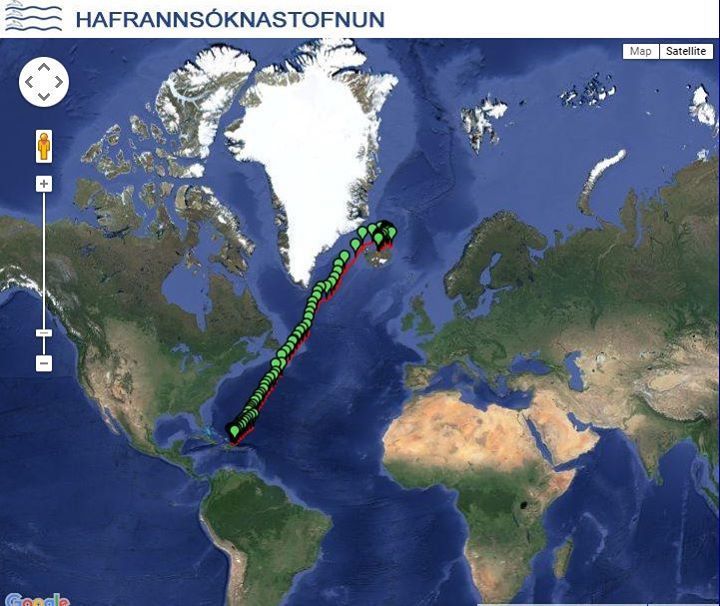The Incredible Migration of the Humpback Whale

The humpback whale is one of the most common whales that can be found in Icelandic waters. In the early spring, generally in March, the humpbacks begin their long journey of approximately 7000 km (4600 miles) from the Gulf of Mexico to Iceland. The whales swim for about a month before they reach the southern coastal waters of Iceland. Most of the time, the whales do not traveling alone; females travel with their calves to the rich feeding grounds.
Their journey is not only long, it's also perilous. Despite their huge size, humpback whales are not safe from one of the world’s greatest predators; killer whales. The killer whales, or orcas, lurk in oceans around the world seeking out opportunities to feed themselves. If the killer whales find migrating humpback whales, particularly females and calves, they will try to separate the calf from its mother whereby it will become extremely vulnerable. If they succeed in separating a calf from its mother, killer whales, generally working together, will then try to drown the calf by biting, and pulling on the whale’s pectoral fins until it is exhausted. This chase can sometimes last for hours. In a final act, the killer whales will launch from the water onto the calf’s back, covering the whale’s blowhole, which suffocates them.By April, the humpbacks will finally reach Icelandic waters. They are hungry and thin after staying in tropical waters for months where they do not feed, but instead focus on breeding and nurturing their newborn calves in the realtively safe waters of the Gulf of Mexico. There is a reason they travel such great distances to Iceland: plentiful food.
The humpback whales found in the Atlantic Ocean have white flippers and are easily recognized as individuals by observing the patterns on their flukes, which are unique, similar to our fingerprints. Once in the North Atlantic, the whales will disperse throughout Icelandic waters. Some stay around the bays of the Reykjavik area, others prefer the south, and many swim up north to Eyjafjörður where they share the rich feeding grounds with blue whales.
For the next nine months, the humpbacks feast on krill, cod, sardines, and other schooling fish in the cold Icelandic waters. The waters around Eyjafjörður are so fertile that some whales will stay the whole year. Whale watching boats in Akureyri can sail out to meet these feeding giants in less than 30 minutes. To see these huge baleen whales prepare for a dive, jump and flap their fins surrounded by the subarctic Icelandic nature is an experience that will stay with you for a lifetime!
By the end of October and early November, most of the humpbacks whales are well fed and prepared for their seasonal migration back to the Gulf of Mexico. Their annual migration is one of the longest recorded journeys of all mammals.
References:
Humpback migration: http://www.hafro.is/undir.php?REFID=15&ID=210&REF=2
Photo credits (humpback whales): Whale Watching Hauganes

